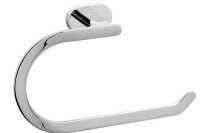Professional dental hygiene in a couple of minutes, and even at home - today it is quite possible. Modern manufacturers of oral hygiene products produce a variety of solutions for the care of teeth and gums. We, together with representatives of the German brand ACleon, decided to ask questions about how to care for your teeth at home and what devices to use for this, dentist Andrey Zubkov.
Dentist, surgeon, candidate of medical sciences
- Andrey, now we will ask you, perhaps, the most common question that should be closed - how many times a day do you need to brush your teeth?
- This question is asked by almost all my patients. We brush our teeth at least twice a day. This is in the morning, preferably after a meal, and also after the last meal before bedtime. The cleaning process should take 3 to 5 minutes.
- How to properly brush your teeth? Where are they most often not cleaned up? How to hold the brush correctly and with which brush strokes are more effective? What characteristics should a toothbrush have? Are there any nuances of choice depending on the lifestyle, the presence of bad habits?
- You need to brush your teeth for 3-5 minutes, as I said above. The hardest part is to clean the space between your teeth, where food debris often gets stuck. They brush their teeth so as not to miss a single one. It is important to thoroughly clean all surfaces - back, side, front, chewing. They always start brushing with the front teeth, then move on to chewing. The outer surface is cleaned first, then the inner one. At the beginning of the procedure, the lower teeth are cleaned, then the upper ones. Here it is important to pay more attention to the upper teeth - they are more vulnerable to carious lesions. By the way, when cleaning, you need to make movements from top to bottom. For each tooth - 3-4 movements. In this case, the plaque will not be driven into the gum pocket, it will be removed from the enamel surface. We hold the brush at an angle of 45 degrees. After the procedure, you need to rinse your mouth, rinse the brush. Yes, we also recommend brushing your tongue where bacteria builds up. For this, special bumps are provided on the back of the brushes. They clean the tongue at night, without toothpaste.
About the stubble. The bristles should be chosen depending on the quality of the teeth. If you have sensitive enamel, you should use soft or very soft bristles. This stubble is also suitable for children. Hard bristles are chosen by people with dentures or an increased tendency to tartar formation. The latter also applies to those who have bad habits, or people working in hazardous work. As for the working area, the larger it is, the more effective the brush is. And if there is a special pattern on the working surface, the space between the teeth will be cleaned efficiently.
- What is the difference between a regular toothbrush and an ultrasonic toothbrush? What are the benefits of electric ultrasonic toothbrushes? What functions of modern ultrasonic brushes can be useful?
- Ultrasonic brushes have a number of advantages over conventional ones. The bristles in them vibrate due to the piezoelectric crystals, which are supplied with an electric current. The oscillation frequency depends on the pulse frequency, the higher the pulsation rate, the better the brush cleans the teeth. By the way, using such a brush is much more convenient than using a regular one. When the patient brushes, he rotates the bristles to the surface of the tooth at an angle of approximately 45 degrees and moves from the gums to the crowns to remove plaque. The ultrasonic brush does not need to be moved with sudden movements - it is enough to move it slowly along the dentition, and it will do the rest by itself. Among the useful functions, you can highlight gum massage. For example, using an ultrasonic brush, you can improve blood circulation in the gums, strengthen them, and therefore prevent periodontal disease. Also, many different attachments are usually provided in brushes of this type. Among them - for cleaning the tongue, braces, crowns. The working speed is regulated, which is especially important for people with sensitive teeth. You can always choose a softer mode.
- Andrey, tell me, is it possible to whiten your teeth at home without harming the enamel health?
- Yes, not in one procedure, of course. For this, you can just use ultrasonic toothbrushes with the appropriate toothpaste - whitening. Due to ultrasound, the paste will penetrate deep into the enamel and effectively whiten it. But do not overdo it with the paste - often such products destroy the enamel.
- Is it possible to remove strong plaque from teeth at home? And will it be possible to do this with a regular brush?
- It is unlikely that you will be able to remove strong plaque from the enamel with a regular toothbrush. And electric or ultrasonic ones do not always cope with such a task with high quality. But there is a way out - this is an irrigator. It does not replace a toothbrush - it complements it. In addition to plaque, the irrigator effectively cleans the interdental space. By the way, the irrigator is quite convenient to use. Just pour water or a special oral hygiene product into it, adjust the jet pressure and take a couple of minutes to take care of your teeth. For the selection of a suitable composition, it is better to consult a dentist.
- Is it possible to use ultrasonic brushes and an irrigator if there are problems with the gums?
- I would say it is not possible, but necessary. The brush and irrigator have a massage effect on the gums and strengthen them. After just a couple of weeks of using these two devices in combination, the patients showed improvements in the condition of the periodontium. The inflammation passed, the bleeding disappeared.
- What if a person has braces or veneers? This also makes dental care much more difficult.
- Not so much. Again, manufacturers of oral care devices today have a ton of solutions. And again, I repeat, in order to qualitatively clean the space at the joints of braces and teeth, an irrigator will be enough. Better - with a special orthodontic attachment. Plus - in ultrasonic brushes there are also different attachments, including for the care of braces or veneers and other dental structures. So there shouldn't be any problems.
- What about sensitive enamel? Which brush should you choose?
- Either regular with soft or very soft bristles, or ultrasonic with adjustable cleaning modes.
- Is it enough to use only one toothbrush? What is dental floss for? What are her disadvantages?
- I would say that using one toothbrush will be enough, provided that you monitor the condition of your teeth and regularly visit the dentist. However, in addition to the brush, it is ideal to purchase an irrigator in order to achieve the most effective cleaning result. We used to recommend dental floss, but lately we are leaning more towards irrigators. Dental floss injures the gums and is not suitable for everyone. Also, when using it, it takes much longer to clean the space between the teeth than when using the same irrigator.
- What is the use of an irrigator? Does it replace regular brushing? What parameters should it have? How to use it correctly?
- I emphasize that one irrigator is not enough. But the tandem of a brush and an irrigator is optimal for oral hygiene. Irrigator parameters vary, of course. Personally, I recommend to my patients stationary devices for home care and portable ones - if they often travel on business trips. A good option is irrigators with the ability to regulate the jet pressure, with a variety of nozzles, a large enough water reservoir so that you do not have to top up cleaning fluid constantly. By the way, according to my observations, patients who use an irrigator to cleanse the oral cavity turn to us much less often. For example, if you take five people using only a brush and five people using a brush and an irrigator for oral cavity care, the first five will come for dental treatment 5 times a year, and the second - only one. If anything, these are approximate figures.


